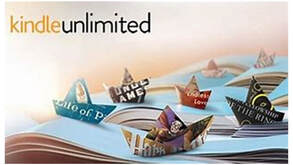 The pros and cons of enrolling books in Kindle Select, the Amazon programme behind KindleUnlimited (KU), are many. It is a constant subject of social media debate amongst Indie authors as to whether it is worth doing or not. But most Indie authors don’t know about the hidden secret behind KU which makes it a much more attractive proposition than you might think. But we’ll circle back to that later in the blog. We know that the amount paid by Amazon for Kindle Enrolled Normalised Pages (KENP) read is quite low. Depending on what price you sell your ebooks for, it could be as low as 10% of the royalties you receive for the sale of an ebook. Conversely it could be as high as 90%. It’s a difficult comparison to make because Indie authors sell their books for a far wider range of prices than trad publishers – anything from 99p to £9.99 or more (99c - $9.99). 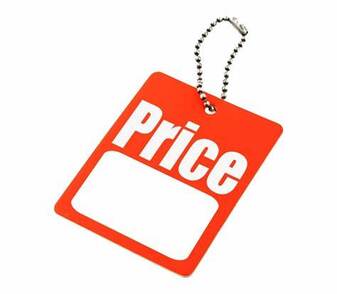 Our standard price point means that for a complete read of a book enrolled in Kindle Select we get about 50% of the amount we would if the book was purchased as an ebook. Compared to our paperbacks, KU downloads provide a slightly better return, as we have to keep our paperback prices low so we can be more competitive compared to trad publishers and therefore we receive lower royalties for paperbacks. One of the arguments against enrolment is that, under Amazon’s T&Cs for Kindle Select, you can’t “go wide”.  That is to say, you can’t distribute your books through other on-line retailers, such as Apple, Kobo, Barnes & Noble, Smashwords et al. Here we have a bit of a paradox, because Amazon’s market share for ebooks is around 67% (USA market). So, if you distribute through other channels you only get access to an additional 33% of the total US market. In the UK Amazon’s market share of the ebook market is 79%, which means “going wide” has the potential to reach only an additional 21%. So, what do you gain by “going wide?” Well, obviously you gain access to that wider ebook market. But access is not the same as sales.  To get those sales, you have to market to people who won’t see Amazon ads. Even if you market using universal book links which can direct readers to both Amazon and those wider markets, there is no guarantee that the reader will choose the wider market in preference to Amazon. Given that marketing on platforms other than Amazon is usually more expensive, you could be paying more for sales you would have got with Amazon Ads anyway. And of course we have to take paperback prices into account as well. Amazon’s economies of scale make them the most economic Print on Demand (POD) seller of paperbacks through the internet. None of the other on-line POD providers can get anywhere close to Amazon’s price structures. Whereas the printing costs from most other POD providers means setting a price much closer to that for physical bookshops, which loses you the competitive edge of selling online at a lower price. So, for readers who want to buy paperbacks on-line, Amazon is the first choice seller. At least, it is if they want buy their paperbacks for the lowest prices.  There are other business models of course. If you buy your own ISBN you can use distributors such as Ingram Spark to print and distribute your books, which means it is possible to get books into physical bookshops, which is an ambition for many authors. We have lost the chance to sign up some new authors because our business model doesn’t include distribution through physical book shops. You can even sell your books direct to the public yourself through sites such as Etsy, but they still require marketing if you want to direct readers to your Etsy store.. By going wide you can put your book out for free all the time through platforms such as Smashwords (permafree as it is known) which can sell you the other books in a series. Amazon doesn’t allow you to do that. But a permafree book doesn’t, itself, make you any money. So, there are solid arguments for not enrolling a book in Kindle Select – providing you can convert potential sales into actual sales.  We take a different view. We know that if a book is selling well as an ebook it will also be downloaded through KU. For the current month (July 2024) KU downloads are accounting for 46% of our total income. Based on an average number of KENP per book, the equivalent number of downloads for our books on KU exceeds the number of actual sales we make of those same books. OK, we don’t make so much money from those downloads, but we do make money. And our authors’ names are better known because their books are being read more widely. At the time of writing, we get the equivalent of 1.7 complete KU book downloads for every book we sell in ebook and paperback format combined. To put that in simple numbers, for every 100 ebooks/paperbacks we sell, we get 170 KU complete reads. Now, we have to ask ourselves – and you – how much more marketing would we have to do to sell 170 more books if we wanted to go wide and therefore didn’t enrol those books in Kindle Select? And, of course, marketing costs time and/or money.  Every click we get for an Amazon ad gives readers three buying options: ebook, paperback or KU. If we don’t enrol the books in Kindle Select and go wide instead, readers would only have two buying options: ebook or paperback. Even if our marketing is successful, with the market shares we have quoted above, for every hundred books we sell through Amazon it is unlikely that we would sell enough books through those other retailers, at a high enough price, to make up for the loss of the 170 equivalent book downloads we get through KU. OK, some of those wider channels also offer subscription library services similar to KU, but they are nowhere near as well subscribed as KU and they don’t pay any better.  And now to that secret we mentioned at the top of the blog. If your books are popular as ebooks, Amazon will actually recommend them to their KU subscribers. And the more ebooks you sell or are downloaded on KU, the more Amazon recommends your books, creating a virtuous circle. Basically, you are getting FREE advertising from Amazon – and let’s face it, they don’t give much away for free. KU subscribers get regular email recommendations and, of course, the books appear in the “recommended for you” listings specifically targeted at them. Yes, KU subscribers get their own recommendations listings because not all ebooks are enrolled in Kindle Select, so the standard "recommended for you" listings aren't suitable for KU readers because not all the recommendations will be available to them - and yours will be one of them if it isn't enrolled in Kindle Select. There are reasons why Amazon pushes KU subscribers towards the more popular books, which we won’t go into here. But one thing is for sure – if you aren’t enrolled in Kindle Select, you can’t benefit.  “But”, I hear you say, “To use KU the reader has to have a Kindle.” “To start with,” we reply. “Kindle is the most popular ereader in the world by a wide margin. But Amazon has thought of that, and the Kindle app allows readers to download books on any phone or tablet, turning them into Kindles as well. It’s been available for years!” Now, we aren’t being paid by Amazon to promote Kindle Select. We are just telling you what we have found and what we have calculated to be the better choice of sales channels for us based on real life data. We do “go wide” with some titles, but they are the ones we have found aren’t downloaded very often through KU, so there is no reason to keep those titles exclusive to Amazon. We don’t know why those books don’t appeal to KU subscribers. We do know that some genres do better on KU than others and that may be one of the reasons. Perhaps we need to do some research into that. But, until then, we lose nothing by going wide with those books. But for all the rest, we enrol our books in Kindle Select so that we can maximise the exposure we get for our authors, which also maximises the income that both we and our authors earn. For us, being enrolled in Kindle Select is a “no brainer”. If you have enjoyed this blog, or found it informative, then make sure you don’t miss future editions. Just click on the button below to sign up for our newsletter. We’ll even send you a free ebook for doing so.
0 Comments
 There are so many new fads and trends in book marketing that we don’t always try them out when we come across them. We take a look at them, ask ourselves if they are really going to sell us more books and then decide if we are going to invest time on them or leave them until we have nothing more important to do. That was what happened when we received the email about the introduction of A+ content to Amazon sales pages way back in 2016 (was it really 8 years ago?). But we saw a video recently that made us go back and explore A+ content a little bit more to see what it might do for us.  Now, I’m not going to pretend that A+ content is going to propel your book sales into the stratosphere. But it may make a contribution towards moving some readers a little closer to buying your books. Its main advantages are that it is relatively quick and easy to use and, more importantly, it is free to use. First of all, what is A+ content? It is additional images and text that you can put onto the sales page of your book to either catch the reader’s eye or to provide additional information about the book. Why should you use it? It provides an opportunity to customise your sales page with additional images which can be used to fire up the reader’s imagination. Something got the reader to click through to the sales page, now you can present something even more exciting for them to look at. The images we have used below are for our Magi Box Set. How do you add A+ content on KDP? On your KDP bookshelf for the book, go to the actions button on the right hand side and click on the 3 dots (…) to get the drop down menu, then select “promote and advertise”. On the promotions page you will find the A+ content section lower down the page, beneath the advertising and Kindle countdown deals sections. Select the marketplace where you want the content to be displayed (for us that’s usually Amazon.co.uk) and then click on “Manage A+ Content” Amazon offers a lot of different layout options for the content, from product comparison displays or technical specifications to different layouts for images and text options. The most popular for books seems to be the type we have displayed above.  We use Bookbrush to create a lot of our images and they have a template that will produce the three sections from a single image. However, if you use other graphics packages they may also have suitable templates. If not, you may have to resort to cropping your images into separate portions. A+ content is uploaded into “modules” and the module we use is the ones titled “Standard Image & Dark Text Overlay”. Each of the 3 sections of the image is uploaded separately. This module offers the opportunity to include a headline and other text below the segment but, as you can see, we have incorporated our text into the images, so we just left the text boxes blank. You can use them or not. It’s entirely up to you.  After that it is just a matter of assigning your content to the right book by pasting the ASIN into the relevant place, and then submitting the content for approval. Amazon suggests approval can take up to 7 days, but we have found that the A+ content is usually displayed on the sales page within 24 hours. Creating the images took us 10 minutes (using an existing image as our starting point) and creating the A+ content on KDP took us another 5 minutes, so this really is a quick and easy way of improving your sales page.  Aside: We used AI to create the image we have shown, and we make no apologies for that. It is the one place where we think AI can be of help to an author, by allowing them to create exciting imagery. Graphic designers may disagree with us, but we have to stick to tight budgets and AI allows us to do that.. As you apply the content to the sales page for a single market, it means you can use different content for different markets. For example, for Amazon.com you might want to use American spellings. For markets where English isn’t spoken, you can use images that use the appropriate language for the country – even if your book is only available in English. You can also use different images for different markets if you think that might affect sales. Images of scantily clad women or women with uncovered hair, for example, may not go down too well in some parts of the world. Amazon review quotes are great when included with A+ content, as shown in the image below. Firstly, the reader only has to scroll down the page a little bit to find the review from which the quote was taken. That makes the quote more trustworthy. Secondly, readers read what other readers recommend and you can't get better than a 5 star recommendation  Did using A+ content make a difference to sales? That’s hard to say. For the books where we added A+ content, we were already running advertising campaigns, so we don’t know what effect having the additional content had on sales. If the reader was responding to an ad, the A+ content may have helped to make the sale, or it may have made no difference. As we can’t get inside the mind of the readers we’ll never know. What we can say was that we started to use A+ content in June 2024 and we had our best sales ever that month. We aren’t going to try to claim a cause-effect relationship, but at the same time we don’t believe in coincidences. Maybe we got one extra sale thanks to A+ content, or maybe we got 100. Or maybe we didn’t get any additional sales and it was all down to the advertising campaigns we were running at the time. However, Amazon claims that having A+ content on a sales page can add between 3% and 10% to average sales volumes. As they are providing this facility for free, they must be making money from the use of A+ content from the extra sales or they wouldn’t be so generous. What we can say is that our A+ content added visual impact to our Amazon sales pages, and we think that is a good thing. We certainly think it is good enough to invest a few more blocks of 15 minutes’ worth of effort into the sales pages of our other books. If you have enjoyed this blog, or found it informative, then make sure you don’t miss future editions. Just click on the button below to sign up for our newsletter. We’ll even send you a free ebook for doing so.  Once again I owe the inspiration for this blog to social media, which is ironic because it relates to the effectiveness of social media as a marketing tool. In this case, I read a Tweet from an author listing all the social media channels to which he subscribed, plus his blog, and bemoaning the fact that they weren’t generating much in the way of sales. I took a quick look at his Twitter feed and spotted at once what the problem was: a lack of engagement.  No, not that sort of engagement! No, not that sort of engagement! He had made a few re-tweets and posted a few “fake engagement” type posts (I’ll be returning to that shortly), but there was nothing on his feed that would encourage me, as a reader, to check out his work. So, it was unsurprising that despite all the channels he was trying to use, he was getting little return. Many authors see social media as a way of plugging their books and no more. That is where they go wrong. Yes, you may generate a few sales by metaphorically saying “Buy my book”, but it is just as likely that readers will scroll past and read a Tweet that isn’t trying to sell them something. 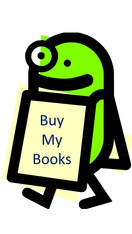 Even if they are interested in the book, they have to click away from the social media channel to check it out, and that interrupts their social media experience, so the best that can be hoped for is that they check it out later. That rarely happens because, by that time, the post has been lost amongst the thousands of others that have since appeared on the timeline. But if social media is so poor when it comes to selling books, why do so many social media gurus still champion it? Because social media is a useful tool – but you have to use it the right way. All tools have to be used correctly if they are to provide you with the right results and social media is no different in that respect. 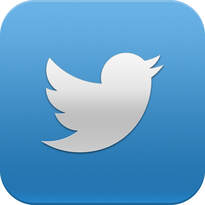 I’ll be using Twitter as my demonstration model, but the same problems apply with most social media channels. So, what do people do wrong? The most common mistake is “fake engagement”. This produces them lots of nice engagement data but doesn’t produce the desired results. In other words, it looks like it is working if you check the number of responses that a post got, but it doesn’t actually sell any books. So, what is “fake engagement”? Well, let’s start with what I mean by engagement. Engagement is supposed to be a conversation, which builds up a relationship, which then leads on to curiosity about the author’s work. 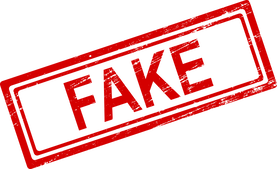 If the approach used generates responses but without that conversation emerging, then it is fake engagement, because it is one sided. It comes in many forms, but these are the most common: “Can anyone see my Tweets?” There are variations on that question, but the basic idea is that the viewer responds with a “yes, I can” answer, which appears in the Twitter analytics as engagement. But it is one sided engagement as no conversation emerges from it. 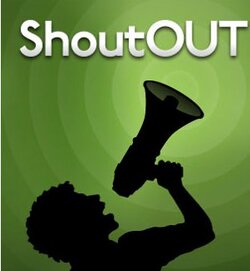 The “Writer’s boost” or “author boost”. This is the one I hate the most, because it uses the desperation of other authors to create the fake engagement. I don’t know of any author who has ever made a sale through responding to that sort of invitation (please comment below if you have). It comes in many forms, including posting links to books or blogs or posting cover images. A variation is asking authors to post the first line of their book or from a chapter, or to say something about a character. The inference is that the curiosity of readers will be excited and they will want to know more, but as the post is appealing to authors, not readers, there is little likelihood of that happening. (yes, I know authors are readers too, but in this instance they are responding as authors, not looking for their next new read). These types of post generate a lot of responses from authors, often several hundred but, again, it doesn’t create actual engagement. There are variations on this approach, such as asking people to recommend books. It usually starts with the poster suggesting they suddenly have some spare cash to spend and they want to spend it on books. 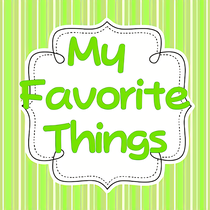 “Who/what is your favourite ….?” There is a natural impulse to respond to those sorts of Tweets, but I would advise against it. In its most harmless form, answering the question is just another form of fake engagement. However, it can also be a form of data gathering. Don’t be surprised if you see a sudden surge in advertising on your timeline related to products associated (however tangentially) with your answer. Some dialogues do emerge from those sorts of questions, but they tend to be between other responders, not with the person who asked the question in the first place. That data also appears in their engagement statistics. The questions take many forms. Another variation is “What goes on first, the peanut butter or the jelly?”, or “What goes with peanut butter (you can’t say jelly)?” The British version of that is “Jam or cream?” (Brits will know what that is about) but it’s still fake.  “I’m having a bad day.” Yes, I know that there are sometimes people on social media who are genuinely having a bad day. But that only makes this sort of fake engagement worse, because it is the very worst form of manipulation. They may look like they are saying “Feel sorry for me; sympathise with me; send me pictures of kittens or puppies”, but all of these are fake engagement. It boosts their engagement numbers and makes their feed look popular, but they don’t actually engage with anyone. And without that engagement, they will never sell any books. And they certainly won’t buy any of your books if you respond. 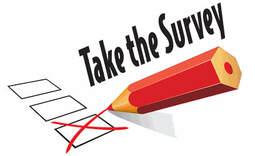 Surveys If you want to boost your engagement stats, post a survey. People love them. But they aren’t real engagement. I could keep adding to this list, but I’m sure you get the idea by now that fake engagement is about getting people to respond to a post, not about actually taking an interest in anything the responders have to say. So, what is real engagement and how do you use it to sell books?  Find the real readers. Find the real readers. First of all, you have to search out and engage with readers, not with other authors. If you are an author, you are trying to attract new readers. That means talking to readers about books.. If you are a sci-fi author, you need to talk to sci-fi readers. If you are a romance author, you need to talk to romance readers, etc etc. How does that sell books? It doesn’t. At least, not directly. Social media isn’t a “direct” sales channel. You can’t draw a line between a post and a purchase. 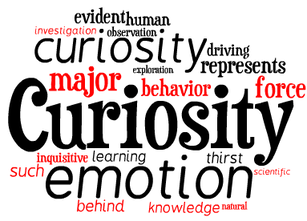 Social media has to be used to excite people’s curiosity about you and the way you do that is the same as you would in real life. You don’t walk up to someone in the street and say “buy my book”. So why would you think you can do that on Twitter, or Facebook, or Instagram? No, you engage people in conversation and the best form of conversation to engage them in is the thing they like to talk about the most – themselves. And, eventually, they feel obliged to ask “what about you?” At that point it is OK to mention your book – because they asked.  BTW, this is where a pinned post about your book is essential. Because they may not ask about you or your book, but they may go and take a closer look at your feed and that’s where they will see the post about your book, if you have pinned it. You still may not make a sale, but you may at least have captured their interest enough to take a look at your book. It is very much a “soft sell” approach, but it is more likely to be successful on social media than a hard sell. How do you identify readers?  It isn’t easy, unless they have it in their biography or they mention it in their posts, but if you assume that everyone is a reader, then you won’t go far wrong. The worst that can happen is that you use social media for what it is meant to be used – for being sociable. Does that all sound like hard work? OK, who told you that it would be easy? Because if anyone did, they lied to you. As I have said in many previous blogs, there is nothing easy about marketing, and that includes social media marketing. Using social media as a tool to promote your work is hard and requires a lot of time and effort. But, done right, it can be effective. Done wrong and it gets you nothing, as the person who inspired this blog found out. If you have enjoyed this blog, or found it informative, then make sure you don’t miss future editions. Just click on the button below to sign up for our newsletter. We’ll even send you a free ebook for doing so. 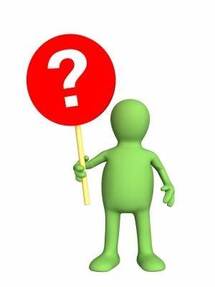 It’s a question a lot of Indie authors ask themselves, but isn’t easy to answer: “Should I do a free book giveaway?” If you only have one book out there, then the answer is “No” (but there are caveats to that – see later in this blog). The purpose of a free book promotion is to stimulate interest in your books, so that you sell more. But if you have given it away for free, who are you going to sell to? The people who have already had it for free aren’t now going to buy a copy, and if someone didn’t download it for free, they are hardly going to pay for it once the offer ends (again, see the caveats later). No, the idea of a free book promotion, or giveaway, is to showcase your writing, so that if readers like the free book, they will then buy your other books. For series writers this is a great incentive for doing a free giveaway. And for non-series writing authors with more than one title available, there is something in this for you as well.  "If it's free, I'll take 10, no 20, no 100 ...." "If it's free, I'll take 10, no 20, no 100 ...." OK, let’s deal with the elephant in the room. Yes, it is true that some people will download the free offer just because it is free and won’t then come back to buy any more of your books. But that is what I call “collateral damage”. It is unavoidable I’m afraid. But mixed in with the freeloaders will be readers who will try your book for free and then go on to buy more of your work if they like what they have read. I know this to be true because I have done it myself. I don’t think I’m unusual in this. At Selfishgenie we have also proved it with previous giveaways, which have resulted in an up-tick in sales of the other titles in the series after the promotion has ended. When we talk numbers later in this blog, they are based on actual results from previous promotions.  So, if you have more than one title available or you are a series writer, doing a free book giveaway can boost the sales of the rest of your books. You may have sensed a “but” at the end of that sentence. If you did, you have excellent intuition. But making a book free is no good unless you tell potential new readers about it, so that they can download it. There are free book listings on most etailing sites; Amazon certainly has one. However, a quick search we did for free books on Amazon returned 9,000 results. The chances of your book being on one of the early pages of the search results are pretty slim and if your book is anywhere more than five pages down the results, there isn’t much chance of it being found because people hardly ever go that far down search results..  I refined that search to “most downloaded free books” and the list was reduced to just 3 pages, but to get into that list your book must have already been download for free, so it won’t appear there on the day you start your promotion. It won’t appear there until someone, (actually several someones), has downloaded the book. Social media promotion will probably shift a few downloads for you, if you have a lot of followers. However, there is no guarantee that your posts about your free offer will be seen. If you only have a very small following on social media, then your reach is limited unless you get a lot of re-Tweets or shares. It may seem counter-intuitive, but you will probably need to spend some money to give your book away for free. 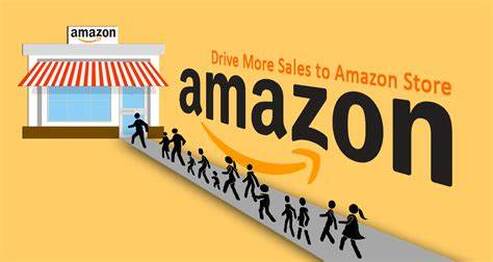 I don’t think Amazon or Google advertising are cost effective ways of doing that. You pay by the click, so it is difficult to control your spend because you probably need a lot of clicks to get enough downloads to start generating paid sales later, which means setting a high daily budget for your campaign. So, you need to look at other, cheaper ways to promote your free book. Ways that will generate lots of downloads. And you really want to know how much those downloads are going to cost you in the first place, so you can work out if you have any chance of getting your money back in paid sales. I’m talking about book promotion sites, which offer a fixed package for a fixed price.  Now, there are two types of book promotion sites. There are those that use social media to promote your book and those that use a wider range of approaches (which may include social media but may not). The most important of these other approaches is email lists, because they are bound to be seen by readers who are on the list. Please, don’t use sites that only offer social media promotion - you can do that for yourself for free. Ignore the fact that your book will be “featured” on the promoter’s website. This isn’t the best way for the promotion to be seen. If that were the case, then it being on Amazon should be enough – and it isn’t. There is usually no guarantee that the readers the sites reach are the right readers for your genre, however. You may be an author of fantasy books and some of the people on the email list may only read romance, or crime drama, or whatever. But at least the readers of fantasy will also see the promotion. Genre preferences are one of the reasons why a 1,000 clicks may only get 100 downloads.  We have recently run a trial using a book promotion website, for our title “The Magi” which produced some promising results. The site we selected boasts an email list of over 300,000 readers. The site promised a guaranteed 1,000 downloads for our free book but we actually only got just over 200 (I’ll return to that later, to explain how the guarantee works). We usually think in terms of 10% of downloads generating new readers for a series or, in this case, approximately 20 new readers. So, here’s the maths (or math if you are American). 1. The promotion cost us £67 ($75) after using a discount code found in this blog 2. The book sells for £4.99 on Amazon. 3. One sale generates about £3.50 in royalties. 3. There are 9 books in the series. 4. If a reader who downloads the first book for free then buys the other 8 books, then it generates 8 x £3.50 = £28. 5. Therefore 3 new readers returns a profit of (3 x £28) – £67 = £14 profit on the promotion. But we reckon 200 downloads should return 20 new readers, so the anticipated profit is about £490. Impressed? Ok, too early to place an order for a Ferrari, but profit is profit.  But we were guaranteed 1,000 downloads, so what happens now that we have fallen 80% short? The site owners promise us a pro-rata refund on the cost of the package. It is “site credit”, so we can’t take it in cash, but it does mean we can run another free book promotion in a few months’ time and it won’t cost us so much. It also means that our profit for this campaign will be higher because of the refund. As for why we didn't get the guaranteed 1,000 downloads, we'll return to that later. There is another aspect to the free downloads that we haven’t yet mentioned and that is the reviews that they generate. If you haven’t had many reviews for your book up to now, then this is a good way to get some more. I mentioned caveats earlier and this is one justification for an author with a single published title to run a free book promotion.  Remember, there were 200 downloads. That may generate a lot of reviews. Even freeloaders write reviews sometimes. And we all know how important reviews are for future sales. There is another time when an author with only one published title may consider doing a free book promotion. That is when they are about to publish a second title. Putting the first book out for free can stimulate demand for the second book. To make sure that this is capitalised upon, the author must put their new title on “pre-order” before running the free promo, and they must include a link to the pre-order at the end of the free book. That means uploading an amended manuscript that includes the link, but that is the work of moments. 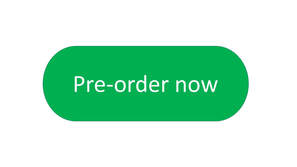 Once the pre-order goes live, whatever sales have been made will catapult the book up the sales rankings, which makes the book look more attractive to other readers who may not have taken advantage of the free download. However, it does require the book launch to be properly planned and timed, so that everything happens at the right time and in the right order. The book promotions site told us that 92% of the promotions they run for free books reach the 1,000 download target, so why didn’t ours do so well? We think we have some answers. We ran our promotion from Thursday to Monday and the number of downloads we got over the weekend was very low compared to the other 3 days. This suggests a lot of the email addresses to which the promotion is sent are work related, so no response at the weekend. But there is another possible reason.  Author Robert Cubitt Author Robert Cubitt The author of the free book, Robert Cubitt, is British but around 80% of the readers on the promotion site’s email list are American. Our actual downloads reflected that proportion, with about 20% coming from outside the USA (UK, Canada, Germany, France Netherlands and Australia to be precise) and 80% from within. Sad to say that many readers will only read books by authors who are the same nationality as them. I don’t know why this should be. I guess people like books that are either written by people like them or are about people like them. But The Magi is a sci-fi series and none of the characters are like the readers (unless there are aliens amongst us) so it shouldn’t matter. It shouldn’t matter for the fantasy genre either. But it does seem to matter, so we Brits will have to suck it up and make do with the scraps from the table. But a potential £490 profit is quite a big scrap and is certainly better than no profit at all. This is NOT a recommendation, but the website we used for the promotion we have discussed here is Book Butterfly. If you missed out on our recent free book giveaway, don’t despair. You can still get a book for free just by signing up for our newsletter. Just click on the button below (excludes “The Magi Box Set). 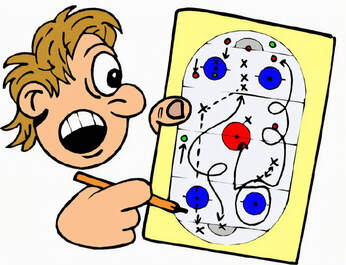 In last week’s blog we discussed marketing for the Indie author and, in particular, constructing a marketing plan. The blog was getting pretty long, so I didn’t say all I wanted to say at that time. What I did say was that the content of your plan lay in the old Rudyard Kipling quote “I keep six honest serving men (they taught me all I knew); Theirs names are What and Why and When and How and Where and Who.” Putting those words into questions helps you to decide the content of your plan: what you will say, who you will say it to, when you will say it etc. That is all good, but some people have never constructed any sort of plan at all, so this blog is aimed at them. How do you get from that Kipling quote to selling more books? For those of you who have written so many plans it is you who should be writing this blog, please feel free to tune out. Maybe go and browse our catalogue, which can be found on the ‘Books’ tab of this website. For everyone else, are you sitting comfortably? Then I shall begin.  The first thing you need when creating a plan is an objective, goal or desired outcome. Call it what you like, but it is a description of where you want to be by the time your plan has been delivered. For Indie authors this is usually quite simple to define – your goal is probably to sell more books. You even have a readymade measurement there to tell you if the plan is working – the number of books that you are selling after you have delivered the plan compared to the number you are selling now. But that is a big goal to achieve and you will need to do a lot of work to achieve it. What you also need to know is if your plan is taking you in the right direction. It might take you 3 months or more to achieve your goal and that is a long time to wait to find out that your plan isn’t working and needs to be re-thought. 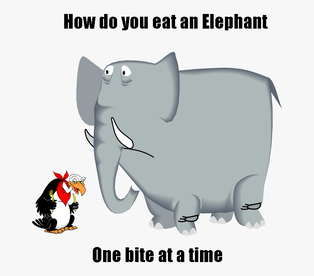 So you have to create sub-objectives, which you can tick off along the way to make sure you are staying on track for success. Believe me, if each step is successful, then the final outcome can never be in doubt. And if some of the sub-objectives still seem quite daunting, you can break them down even further. Remember the old maxim: “How do you eat and elephant? – One bit at a time.” (apologies to vegans). You may even want to run a few “pilot schemes” or “trials” to see if what you plan to do is actually going to work on a larger scale when you set the whole plan in motion and those trials also become sub-objectives.  Build the walls before you try to put on the roof. Build the walls before you try to put on the roof. One of the things of which you have to be careful, is that you lay out your sub-objectives in the right order. For example, if you were building a house, “Put the roof on” wouldn’t appear in the plans until after “dig foundations” and “build walls”. You may need to spend a bit of time making sure your marketing plan is constructed in the right order, just like you would build a house.  Last week we talked about getting some training in social media marketing, so that might be an early sub-objective in your plan. We also talked about writing your marketing messages, so trying those out on people might be another sub-objective. But basically, all you are doing is breaking down one very big and daunting objective into several smaller, less daunting tasks, then laying them out in a logical order. In project management we call the completion of sub-objectives or tasks “achieving a milestone” and it feels very rewarding to reach each milestone and tick it off your plan. But, just like real milestones, you have to know where they are, which means having some sort of measurement of achievement for each task. 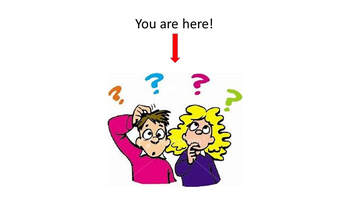 After all, there is no point in knowing “you are here” if you have no idea what “here” looks like. In the same way, you can’t know you have reached a milestone if you don’t know what a milestone looks like. A written description of what it will look like is the best way of recognising a milestone. For example, a description of the messages you want to send out about your book might read: “Write 7 sentences/paragraphs of up to 140 characters* that provide a clear indication of the book’s content., grammatically correct, correctly spelt and tested on sample readers.” You can see from the description that “quality” checks are built in. That is the sort of “product” or task description you could write for each sub-objective, so you will recognise your milestone when you get to it.  But all plans are meaningless if they don’t have resources assigned to them. A plan without the resources to deliver it is just a wish, a hope or a dream. These resources can include money, to pay for things such as advertising. But a far more important resource is information. You have to know the answers to those who, what, why etc questions you asked, so that you can apply your other resources in the right place at the right time. So one of your objectives is almost certain to be information gathering, or research as it is more commonly known. This will result in you not wasting your other resources (such as money) on the wrong activities. 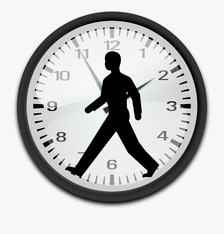 Time is another major resource. None of this stuff will do itself. Yes, I know, you’re a writer. You don’t want to have to spend all your time doing marketing. Which makes it all the more important that you don’t waste what time you are willing to expend on marketing, doing the wrong things. There is an old saying in quality management “Isn’t it amazing how people who don’t have time to get things right the first time they do them, always have plenty of time to correct their mistakes.” And if you are spending money, you can’t afford to spend even more money correcting mistakes by getting things wrong first time. So, all that research is critical to you avoiding getting things wrong the first time you try them.  The final resource I’m going to talk about is knowledge, which I have already touched on earlier. If you don’t really know what you are doing, you are going to waste your other resources on getting things wrong. “Trial and error” may teach you a lot, but it is an expensive way to learn. Invest in yourself, even if the investment is just time spent doing a free on-line course. We’re not talking about studying for a 3 year business management degree here, just a few hours learning the basics of social media marketing and trying out a few ideas to get a feel for what is right for you and your books. And once you have your marketing plan – you can use it again and again, refining it each time as you learn what works best and what isn’t working so well. Because you will have to keep repeating your marketing activity, because marketing messages soon fade from people’s consciences and you will always be looking for new readers who will buy your books, because nobody buys the same book a second time (except as a gift for someone else or because they forgot they owned it already). * We know that Twitter now accepts posts of up to 280 characters, but you need to make an allowance for the inclusion of a link to the book’s sales page and for hashtags. And, of course, character count isn’t an issue for Facebook posts, though people rarely read beyond the first few lines. For Facebook, think “elevator pitch”. If you have enjoyed this blog, or found it informative, make sure you don't miss future editions by signing up for our newsletter. We'll even give you a FREE ebook if you do.  The most common complaints from authors I follow on Twitter are about marketing their work. They either say how hard marketing is, or they ask questions about whether it is necessary to market their work – before going on to ask how to go about marketing. Last year we posted a series of blogs about marketing for the Indie author and there are many other bloggers out there who have shared their knowledge, so there is no shortage of advice available. But to deal with the first issue first, yes, marketing is hard work. But it is essential work if you are an Indie author because no one is going to do it for you. 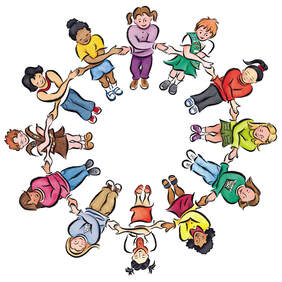 Small circles limit sales. Small circles limit sales. I’m not going to go back over the same ground again; if you want to know what I wrote about marketing you can find my blogs in the archive and if you want to know what other bloggers have said then just Google ‘blogs about how to market a book’. But I will offer some guidance here, just to whet your appetite and maybe prompt you to read a bit further. Let’s deal with the obvious, which is that the only people who are going to buy your book are the people who you tell about it. If you limit that to friends and family, then that is going to be your entire readership. 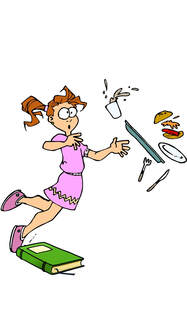 Marketing your book is about getting beyond friends and family to a wider audience and telling them about your book. On the optimistic side, your potential audience is global, but you have to find them because they won’t find you. I’ve said it many times in these blogs, but I’ll say it one more time. No one is going to stumble over your book by accident. Yes, it will show up in the search results on whatever book selling site you choose to use, but probably not on the first page of results, or even the second or third pages – and people looking for something to read very rarely get that far down the search results. So, what can you do about it?  The first thing is to find out how to market your books. If you don’t know what you are supposed to do, it becomes much harder to do it. And if you have heard that all you have to do is go on social media and make a few posts about it, then you have been misled. There is far more to it than that. OK, how do you learn? There is a very good website that offers free on-line courses, covering a wide range of subjects including social media marketing. Google “Futurelearn” and then search ‘social media marketing’ on their website. Most of the courses can be completed in a day if that’s the way you want to study them, but you can take as long as you want to finish them. Yes, it is time consuming to learn new skills, but floundering around in the dark and getting more stressed about why your books aren’t selling is far worse. It is better to light a candle than to curse the darkness (William L. Watkinson) – so light a candle of learning.  Like it or not - you need a plan. Like it or not - you need a plan. The next thing you need to do is to make a plan. Yes, boring, I know. But you can’t focus your efforts to get the best results if you haven’t got a plan. We’re not talking about constructing Gant charts and Pert charts here - you aren’t building a rocket ship. Pretty much the whole of your marketing plan can be written on one side of A4 paper – in big letters.  Rudyard Kipling - he had 6 good serving men. Rudyard Kipling - he had 6 good serving men. You may be familiar with the Rudyard Kipling quote “I keep six honest serving men (they taught me all I knew); Theirs names are What and Why and When and How and Where and Who.” Those 6 words form the basis of your plan. I’ll address them in the order they appear in the quote, for no other reason than that. So, ‘what’ do you want to say about your work? Having half a dozen, short clear messages to tell people about your work is essential. 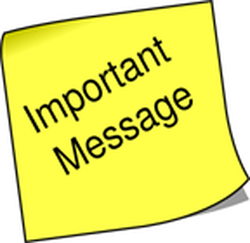 Why half a dozen (it could be more)? Because people get bored reading the same Tweet or Facebook post time and time again. You need to keep your message fresh. And your message needs to sell the sizzle, not the sausage. What do I mean by that? Well, a sausage is a pretty mundane foodstuff, so you have to sell the ‘image’ of the sausage that gets people’s mouths watering: the golden-brown sausage sizzling in the pan, sending out appetising aromas. If you think that sounds like a hard thing to do, then I suspect you shouldn’t be a writer. Creating written images like that (and better) is your stock-in-trade.  ‘Why’ follows neatly from What. With so many books on the market (millions of them), why should a reader choose yours? You have to tell them why. You have to have a USP (unique selling point); something that your book does that no other book can or will do for them. We call this the ‘story’ and it has to sound attractive. It helps if you understand who your readers are and what they are looking for, because that will allow you to target them with the USP that will appeal to them. Because it will be a different USP for readers of romance, compared to readers of SFF, to use one contrasting example.  ‘When’ is a tricky one, but you have to know when your readers are going to be on social media. It will be at different times for different types of reader. If you are writing YA or children’s books, then school hours are out. If your audience is mainly elderly readers, then forget the evenings, because that’s when they watch TV – and they go to bed earlier. So this ‘when’ issue is something you really need to think about. Tweets start to lose their visibility to users just 5 minutes after they’ve been posted. Facebook posts start to lose their visibility after about 25 minutes – so timing is important if you want your messages to be seen. Did you know you can schedule posts on Facebook and Twitter, so they can be posted on whatever day and at whatever time you want, not just when you are on-line yourself? Other social media channels may allow you to do the same – so use that facility. 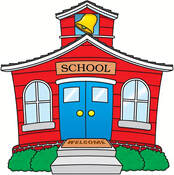 Every day is a school day! Every day is a school day! ‘How’ is the bit you really need to learn. There are good ways of promoting work and there are bad ways. If you think you already know the good ways, you can still learn the better and the best. Every day is a school day, as someone once said and if you already know everything – why are you reading this blog?  You have to search for your audience. You have to search for your audience. You may think ‘where’ is a simple matter – social media of course. Well, there is more than one type of social media, for a start and not all of it is good for all types of writing. As I said in a previous blog, if you write for children or YA, then there’s no point in being on Facebook and Twitter, because your readers are on Instagram and Tick Tok. Do some research to find out what sort of social media your readers are likely to use – then use it yourself. But also in the ‘where’ category are places other than social media. There is a whole raft of readers who get their book suggestions from sources other than social media, and it is beneficial for authors to use them. Local book shops, book fairs, public library events, even the village fete is a potential outlet for the entrepreneurial author. But if you don’t publish hard copy books, these will have a limited impact on the people who go to these things, because they will want to buy a copy at the time, not go back home and order on-line. Then there is local radio and your local newspapers – but you have to reach out to them, because they aren’t going to come looking for you. But they do have column inches or air time to fill, so they are usually receptive. And all this is before you consider paying to advertise, which is an option that is open to even the smallest purse.  The last friend amongst the 6 is ‘who’. We’ve already touched on this to an extent. Who will buy your book? Not everyone who reads books will read the sort of books you write. I don’t read westerns, for example. There’s nothing wrong with westerns, they just don’t appeal to me, in the same way that paragliding doesn’t appeal to me. You have to know who your readers are so that you can focus your efforts on reaching them and not wasting time (and often money) sending out blasts of promotional material to people who will never buy your books. Some of them may never buy any books at all, let alone yours (we call these people “weirdos”). I know all of the above sounds daunting but, as Lao Tzu said a very long time ago, a journey of a thousand miles starts with a single step. And the best single step you can every hope to take is to go back to school and learn how to do your social media marketing better. Good luck with your marketing plan and please feel free to share your success stories in the comments section below. If you have enjoyed this blog or found it informative, why not sign up for our newsletter so you can be kept informed about future blogs. And you can get one of our books for FREE just for signing up. Click the button below to find out more. Week 7 - Knowing Your Organics From Your Inorganics  Strategy – it’s a big scary word used by clever people who earn lots of money. No it isn’t. Strategy isn’t that complicated, at least not as a concept. Really, all it means is knowing what result you want and working out a way to achieve that result using the resources you have available to you and then knowing when you have achieved your result. We already know what result you want – you want to sell your book. "social media, which is a resource you can use for free" This weekly blog is discussing the ways that you can achieve that result using social media, which is a resource you can use for free (or, at least, quite cheaply). And you will know if you achieve your results if your book sales increase. Actually, there are some other things you can measure along the way to tell if you if you are heading in the right direction, but we’ll cover them later.  You can write your whole social media marketing strategy in five bullet points or less. Here’s ours:
As you can see, it isn’t exactly rocket science. There are other layers of actions below those five, but as someone once asked – how do you eat an elephant? The answer is: one bit at a time (apologies to vegans and wildlife conservationists – but it’s only a metaphor).
target audience for your book(s), but that only takes your strategy to the first bullet point. Because each audience is unique, we have to engage with them in unique ways. This is why blasting out generic Tweets doesn’t work. You need to understand the “organic reach” of your social media marketing channels to get the best out of them.  Let’s take Young Adult (YA) fiction as an example. YA fiction is aimed at readers in the 12 to 18 age group. They are social media savvy and they are usually on the latest and trendiest social media platforms. If your idea of social media is Facebook, then you are onto a loser with the YA audience. Only 51% of teenagers who use social media use Facebook, the second smallest group after the over 65s. Even Twitter is a bit old hat for them, taken over by oldies who only want to argue about politics.
allowed to use their phones or other devices during school hours, except for schoolwork. The best time to engage with YA readers is going to be during the evening, typically between 7 and 10 pm. But that’s when you are sitting down with a mug of cocoa, watching Corrie and Midsomer Murders. When we talk about the organics of social media, we are really talking about the way your messages “grow” and get noticed. It’s like applying fertiliser to a plant. Put it down at the right time and in the right place the plant will flourish. But put it down at the wrong time and the rain will wash it away and the plant will wither and die and if you put it in the wrong place it won’t get to the roots of the plant, with the same result.  YA is a good example of this, because young people love sharing things on social media – far more so than their elders. So, hit the YA audience with the right message at the right time and it won’t just reach the ones who follow you, it will be shared with all their friends as well. And then their friends will share it and so on and so forth. If you do it right, you may even “go viral” and your message will be seen by millions of YA readers around the world. But on the other hand, the YA audience is the most challenging to reach because they respond best to visual images – particularly video. That’s why Tik-Tok is currently the fastest growing social media platform on the planet. But how do you get a message out about your books on Tik-Tok? We’re not going to answer that question - yet.  The first plant you have to nurture and grow is your own social media presence. If you are an author using Twitter and you have only 100 followers – you haven’t got a social media presence. In organic terms, you aren't even a seedling. Until your followers number in the thousands, probably tens of thousands, your social media presence isn’t going to help you at all. This is when people get tempted to buy “followers”. Well, it’s your money and if you want to waste it, that’s your privilege. Because most paid for followers aren’t real people, they are bot (robot) accounts. They only exist as a username. And bots don’t buy books. "If you are an author using Twitter and you have only 100 followers – you haven’t got a social media presence." The cleverest of these bots re-Tweet other people’s Tweets, just so they can appear more human. Strangely, people actually follow some of these bot accounts, including other bots, so you have bots following bots. Crazy, isn’t it? You know those biogs that say “Follow me and I’ll follow you back”? How do you know you aren’t following a bot? A lot of bot accounts are used to bombard people with advertising. OK, I know that sounds hypocritical when we’re blogging about social media marketing, but at least we’re real people (honestly – we are!). 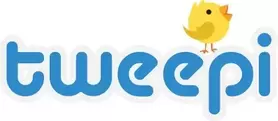 There is an app called Tweepi which will help you to gain followers over time. It’s a bit of a blunt instrument, based on the idea that if you follow a lot of people, some of them will follow you back. You have to pay to use some of their features, but you can also get a free account with a limited range of features, which is enough to get you started. But if you are prepared to spend twenty minutes a day on Tweepi you can probably add about a hundred new followers a week to your Twitter account. We’ve produced a guide to using Tweepi which you can download at the bottom of this blog. It's bit dated now, so bear with it. One of the things you can do with Tweepi is to use keywords to identify your target audience. You can also suggest accounts to find followers, so if the biggest name in your genre has a Twitter account, you can put their user name in as a suggestion when you set up your account. The real secret, however, is to attract more followers because of the stuff you post on social media. This is your “engagement strategy”. Let’s say that when you identified your audience characteristics (the homework we set last week), you thought that many of your audience would probably be dog lovers. So, if you Tweet lots of things about dogs, anyone who likes dogs is going to be interested in reading your Tweets.  Not only will they read your Tweets, but they may re-Tweet (RT) the best ones. That will bring you more followers. But, more importantly, if your Tweets get lots of “likes”, they are more likely to appear at the top of peoples’ Twitter feeds, which makes them more likely to be seen. That’s how social media algorithms (horrible technical term) work these days. If your Tweets are the first ones that are seen, they are more likely to be read and they are more likely to be RT’d and because of the number of likes, they are more likely to bring you new followers. That’s organic growth in a nutshell (groan at bad pun). If you are good at it, you will soon have more followers than people you follow yourself – just like Katie Perry or Steven Fry.  The whole point about “social media” is that it is social and that means engaging with other people first, taking an interest in what they have to say. Mind you, reading some of the posts it is sometimes easy to re-name it anti-social media, but that is a whole different blog. So, the other thing you can do is engage in conversations about other people’s posts. If you are engaged, then other people in the conversation may find what you have to say interesting enough to want to follow you and, of course, you want to follow them. It’s another way of getting organic growth.
but Tweet about dogs (or whatever) far more frequently. A ratio of 10:1 is probably about right. What sort of message to post about your books is the subject for a later blog, so stick with us. These last few paragraphs have mainly been about Twitter and that is because it is the easiest platform to demonstrate the points we wished to make. But the same basic rules apply to all the other social media platforms: Facebook, Instagram, Pinterest et al: social first, commercial second. It’s a hard lesson to learn if you want quick results, but if you want to be in this for the long haul, it is worth taking the time. And, more importantly, if you want to see your sales growing, you have to be in it for the long haul. If you have only written the first chapter of your book, or even the first paragraph, then now is the time for you to start engaging with your audience. That way you will already have an engaged audience by the time your book is published. But it’s never too late, so even if your book has been out for years, you can start today. You will probably have worked out by now that this is all very time consuming. Which is why some Indie authors choose to use (small) publishers, like us, to do this for them. But not all small publishers are equal, as I explained in a previous blog. Paying for services up-front rarely produces the results hoped for. There will be no attempt to establish any sort of social engagement, which means the posts about your books are less likely to achieve any results.. OK Selfishgenie Publishing, put your money your money where your mouth is - what are you doing to engage with your audience?  You’re reading this blog, aren’t you? That is part of our engagement strategy. We identified the fact that if you are an Indie author, you are going to be interested in knowing how to market your books. If you are an author then, almost by definition, you are a reader too. So, we’re publishing this series of blogs so that you will engage with us and we can engage with you. You might take a look at our books while you’re here or you might not, but that doesn’t matter. It is the engagement that matters. In previous blogs we have used some of our books as examples of what we were talking about. It comes as no surprise (to us) that our sales for those books went up a little bit after those blogs were posted. I mentioned at the top of this blog that there are some measurements that will help you work out whether your strategy is working or not and social media provides some easy measurements for you to use: Number of followers, number of RTs and number of likes. If those numbers keep going up, then your engagement strategy is working. Some sites offer even more “analytics” and you might want to take a look at them to see what they might tell you. For us here at Selfishgenie we also measure “number of visits to our website”. When you clicked on the link to get here, you showed up on our metrics (more jargon, it means the way we measure success). So, do you read a lot of blogs? Many are part of someone’s engagement strategy. Don’t worry about that though. The important thing is whether or not you find the blog interesting or entertaining. 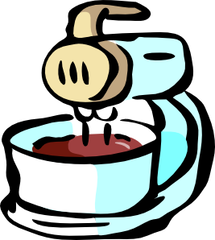 In terms of the “marketing mix”, engagement on social media falls under two different Ps: Place and Promotion. Place is the “channels” that are used: FB, Twitter et al and Promotion is the messages that you put out to help you engage with people. Next week we’re going to take a more in depth look at blogs and also look at using extracts and teasers to promote your work. If you have enjoyed this blog and found it informative, do be sure to register for our newsletter so you can be sure of never missing an edition. Just click the button
|
AuthorThis blog is compiled and curated by the Selfishgenie publishing team. Archives
June 2025
|
||||||||||||




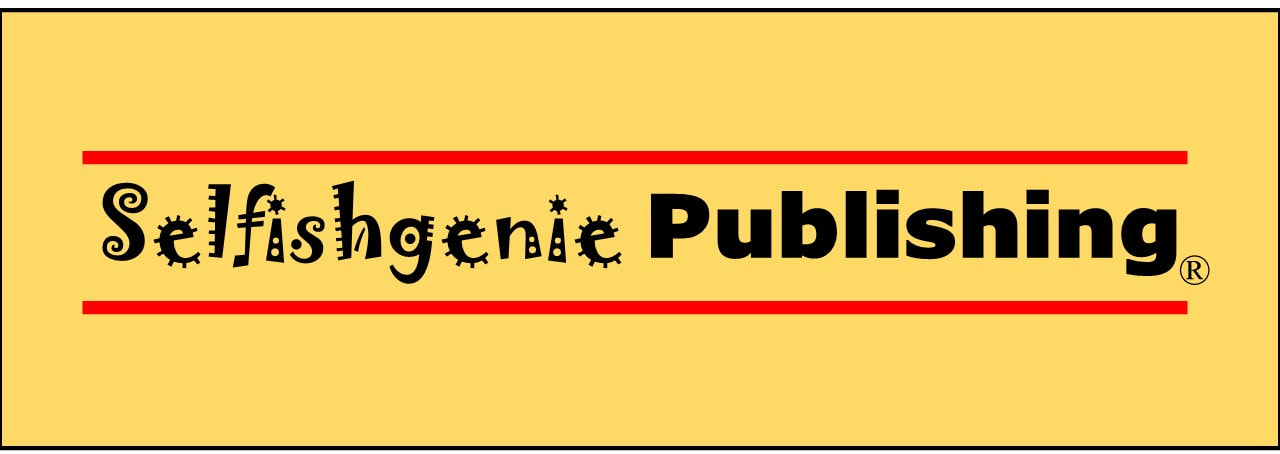
 RSS Feed
RSS Feed